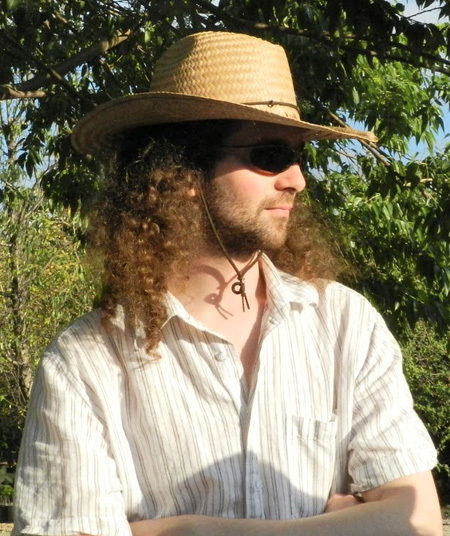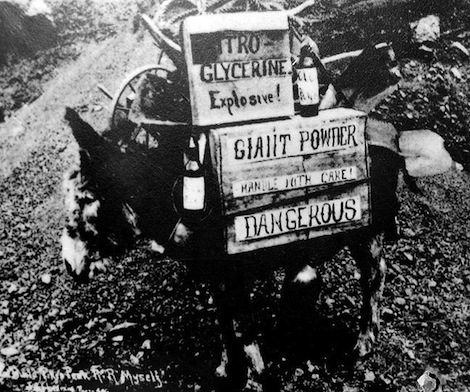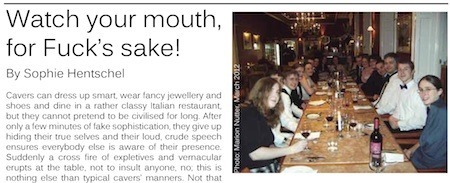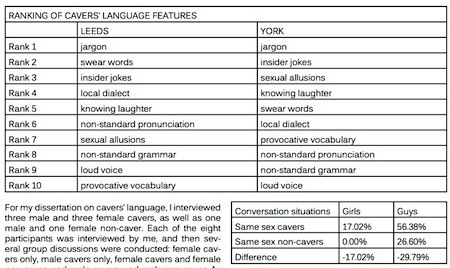Marc Abrahams's Blog, page 465
September 8, 2013
Retraction retraction watch
The Retraction Watch blog reports the case of a retraction of a retraction of a research study:
Bitter legal fight leads to a retracted retraction
Two years ago, the FASEB Journal retracted a paper that it had initially agreed to correct, after a dean at one of the author’s institutions said that a “well-recognized and top-class fact finding commission concluded that the publication contains gross flaws.” The retraction of the 2003 paper, as we noted at the time, punctuated a complicated case involving several investigations as well as legal maneuvering.
Now, the journal has retracted the retraction. Here’s the beginning of the notice:
“Regarding the article titled, “Molecular analysis of Nogo expression in the hippocampus during development and following lesion and seizure,” by Susan Meier, Anja U. Bräuer, Bernd Heimrich, Martin E. Schwab, Robert Nitsch, and Nicolai E. Savaskan, published in the June 2003 issue of The FASEB Journal (FASEB J., 2003 Jun;17(9):1153—1155; doi:10.1096/fj.02-0453fje)….”
This could be the end of the story — or it could be just the beginning two chapters. There is a possibility — a possibility, mind you — that the retracted retraction will again be retracted. Spectators eagerly wonder: will this become that rare kind of case, a retraction retraction retraction?
BONUS (thanks to investigator Mark Siegel for bringing this to our attention): Hilda Bastien, in her Absolutely Maybe blog, writes about the larger context of this:
Bad research rising: The 7th Olympiad of research on biomedical publication
What do the editors of medical journals talk about when they get together? So far today, it’s been a fascinating but rather grim mixture of research that can’t be replicated, dodgy authorship, plagiarism and duplicate papers, and the general rottenness of citations as a measure of scientific impact.
We’re getting to listen and join in the editors’ discussion this week in Chicago. They assemble once every four years to chew over academic research on scientific publishing and debate ideas. This tradition was started by JAMA in Chicago in 1989. The name of the international congress still goes by its original pre-eminent concern, “peer review and biomedical publication.” But the academic basis for peer review is a small part of what’s discussed these days.…

Ig Nobel Night in Paris also will celebrate Pitch Drops
 Ig Nobel Night in Paris grows ever more intriguing. Parisians will gather at ESPG to watch the live webcast of the 2013 Ig Nobel Prize ceremony. The Paris organizers tell us today about the latest addition to the festivities:
Ig Nobel Night in Paris grows ever more intriguing. Parisians will gather at ESPG to watch the live webcast of the 2013 Ig Nobel Prize ceremony. The Paris organizers tell us today about the latest addition to the festivities:
The Paris event at ESPGG – ESPCI ParisTech will feature a DIY science competition in homage of John Mainstone, the 2005 Nobel prize winner for the longest experiment ever.
Twenty competitors will have to prepare the slowest flowing mixture out of usual kitchen ingredients. All at the same time, they will place it in one of 30 funnels: the winning mixture will be the one that will release the first drop as late as possible, but before the Harvard Ig Nobel ceremony will end. And while waiting for the drops to drop: a “time’s up game”, a spot the false Ig Nobel competition, a theater set involving the public for an on-demand, IgNobel scientific congress, and several other amenities.
It all happens on Thursday night, September 12. There will also be webcast watching parties in other places in other countries. (If you are having a part that’s open to the public, please tell us and we will add it to the list.)
BONUS: A Brazilian tribute to John Mainstone: A paciência de John Mainstone (1935-2013)

Romain Franconville joins Luxuriant Flowing Hair Club for Scientists (LFHCfS)
Romain Franconville has joined the Luxuriant Flowing Hair Club for Scientists (LFHCfS). He says:
I’m a researcher at the Janelia Farm Research Campus, where I study the neural control of locomotion in Drosophila melanogaster. My focus is on walking behavior, as flying flies tend to get stuck in my hair.
Romain Franconville, Ph.D., LFHCfS
Postdoctoral researcher
Janelia Farm, Howard Hughes Medical Institute
Ashburn, Virginia, USA


September 7, 2013
One Way to Thaw Giant Powder
There may be many ways to thaw giant powder. Thomas Boseveae came up with one of them, but his patent has expired:
“Apparatus for Thawing Giant-Powder,” US patent #268540, granted to Thomas Boseveae on December 5, 1882.
Giant Powder was made and sold by the Giant Powder Company of California, under license from Alfred Nobel. It went kaboom.

September 6, 2013
Turnspit, the kitchen dog
Nicola Twilley essays upon the history of using dogs to power the preparation of food:
Dogs still occupy a variety of roles in the human food system, from sheep herding to barbecued delicacy. What is less well known is that before the advent of gas or electric ovens, dogs also provided a convenient power source for kitchen appliances….
BONUS: Patrick Chaplin’s reflections on a turnspit dog

Fire in the river (Cleveland), fire from on high (London)
The Cuyahoga River in Cleveland, Ohio, caught fire, in 1969. Randy Newman wrote a song about that. This week, in London, UK, things in a neighborhood in London are burning, the heat being supplied by a new, tall building that—for lengthy periods of the day during at least part of the year— focuses sunlight down at that neighborhood. Io9 has a nice description of this new phenomenon, and points to the news video you see here, below the Randy Newman video. Below that, a second news report about the London excitement. Burn on, big river. Burn on, big building.

A look back at how good old-fashioned books can save your life
The question of print books versus e-books is a matter of life and death, if Bill Crozier’s theory is correct. In 2006, Mr. Crozier proposed that schoolchildren be equipped with thick books, to use as shields if and when their school is attacked by terrorists. Mr. Crozier proposed this theory during his campaign to become Superintendent of Education for the state of Oklahoma. Mr. Crozier did not become Superintendent of Education, and the schoolchildren of Oklahoma remain, for the most part, inadequately defended by their textbooks.
Here’s video of Mr. Crozier demonstrating how his theory plays out:

Gender in student caving (just saying)
Sophie Hentschel sends forth this message: “I will give a lecture with the title ‘Gender in student caving’, which will summarize my findings from my Master’s research. I researched a specific phonological feature that is used among student cavers of a particular club and found how its use differs between males and females.” The lecture will be part of Hidden Earth, “the UK’s annual caving conference”, 27-29 September 2013, in Monmouth, South Wales.
Hentschel presented a version of that research in the publication York Underground — The University of York Cave and Pothole Club Journal (2013, issue 3). There she writes:
“For my dissertation on cavers’ language, I interviewed three male and three female cavers, as well as one male and one female non-caver. Each of the eight participants was interviewed by me, and then several group discussions were conducted: female cavers only, male cavers only, female cavers and female non-caver, and male cavers and male non-caver.”
Here are details from Hentschel’s study:
(Thanks to investigator Adrian Smith for bringing this to our attention.)

Infertility in Star Trek
 Professor Victor Grech MD, PhD (Malta), PhD (Lond.), FRCPCH, MRCP(UK), DCH is Associate Professor of Paediatrics, at the University of Malta. The professor points out, in a paper for The Yale Journal for Humanities in Medicine, that : “In the current ‘publish or perish’ milieu, the generation of original papers is vital.“
Professor Victor Grech MD, PhD (Malta), PhD (Lond.), FRCPCH, MRCP(UK), DCH is Associate Professor of Paediatrics, at the University of Malta. The professor points out, in a paper for The Yale Journal for Humanities in Medicine, that : “In the current ‘publish or perish’ milieu, the generation of original papers is vital.“
(see: ‘How to write a scientific paper‘)
A current project is a dissertation with the English Literature Department of the University of Malta entitled ‘Infertility in Science Fiction’. And, as part of this project he has authored : ‘Infertility in star trek’ in: World Future Review (a journal of strategic foresight), Winter 2012, vol. 4, no. 4, pp. 19-27
“It is fair to say that Star Trek comprises a selfcontained subgenre within science fiction (SF). Over nearly 50 years, through six distinct television series, and eleven feature length films, the “Star Trek universe” envisioned by Gene Roddenberry has become arguably the world’s most elaborate and widely recognized depiction of life in future times (covering roughly the twenty-second through the twenty-ninth centuries). In this article, situations involving infertility occurring in episodes from different Star Trek series are examined and some general conclusions offered concerning the perception of this problem and the variety of responses proposed.”
ALSO SEE: The professor reminds us that there is an upcoming Star Trek Symposium in Malta, 10th-11th July, 2014.
Please note that “This is an academic symposium meeting on Star Trek. Abstracts of proposed oral presentations must contain a scholarly message, preferably dealing with the interface of medicine or science and the humanities.”
BONUS: The professor also paints Maltese landscapes and seascapes – a particularly relaxing pastime. Some of his work can be found at : www.maltaimpressions.com

September 5, 2013
Announcing: a courtesy for intelligence agencies the world over
We are pleased to introduce @IG_NSA — a Twitter feed supplying background info and secrets of the Ig Nobel Prizes.
@IG_NSA is intended as a courtesy for intelligence agencies the world over. It is meant to express the good wishes of the Boston/Cambridge area technology/science/medical community.
AND COMING SOON…
We will also soon announce [watch this space and/or follow the Twitter feed] The NSA Courtesy Cam — an intelligence webcast that will show below-the-scenes video during the Ig Nobel Prize ceremony on Thursday, September 12, 2013.
The NSA Courtesy Cam will be a second —parallel and unofficial — video feed, streaming in addition to the official Ig Nobel Prize ceremony webcast. We hope you will watch both webcasts simultaneously.

Marc Abrahams's Blog
- Marc Abrahams's profile
- 14 followers






